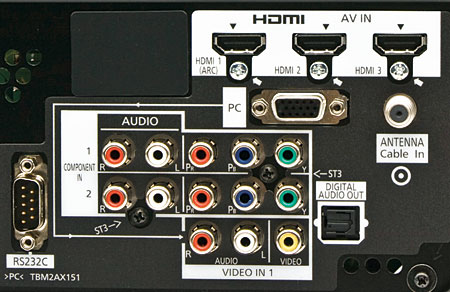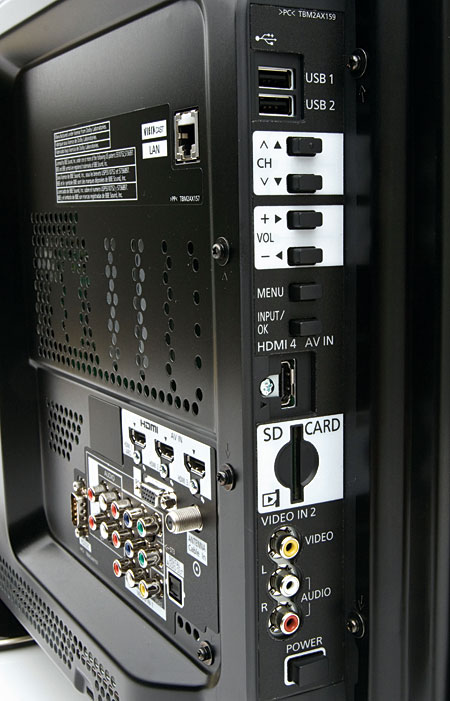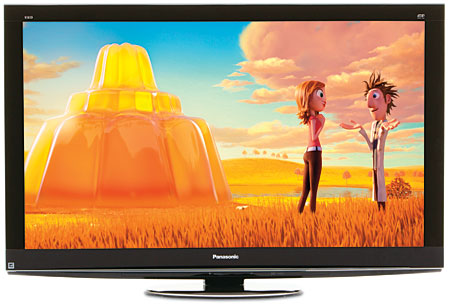Panasonic VIERA TC-P50VT25 Plasma 3D HDTV Page 2
In the Custom Picture mode, with the Contrast on maximum (100), the Panel Brightness control on High, and the Gamma on 2.2, the Panasonic provided a punchy 3D image, even in modest room lighting. It also had more pop than I recall from the Samsung UN46C8000, although that set was no longer on hand for a direct side-by-side comparison.

The Panasonic’s 3D quality appears to be limited mainly by the source material. That’s no big surprise. The Panasonic made the most of the best 3D, while it clearly revealed problems in the worst. The latter included live-action footage of the Grand Canyon on Panasonic’s demo disc. While some of the shots were fine, others looked no better than standard definition.
Scenic shots of the Canadian wilderness looked so spectacular that I wanted to break out the old kayak and shoot me some rapids (until I realized I don’t have an old kayak—or even a new one). While a clip of the sights of Rome looked palpably real, I would have preferred more of Rome here and fewer clown-faced jugglers—although some viewers will enjoy the jugglers’ popping-out-of-the-screen antics.
Of the four animated Blu-ray 3D movies on hand, Monsters vs Aliens is easily the most fun, while Coraline makes the best use of the 3D medium. Although Coraline is a bit too creepy and scary for anyone under eight, it offers a boatload of visual treats. I found the film to be far more interesting and involving in 3D than it was when I first saw it in 2D.

Overall, 3D on the Panasonic is as effective as any 3D you’ll see in a movie theater, apart from sheer image size. Unlike the Samsung LCD set I reviewed last month, the 3D illusion on the Panasonic remains undiminished even at significant off-axis angles. You can thank the inherently wider viewing angle of plasma designs for that.
The Need for Speed
A number of new Panasonic developments contribute to the TC-P50VT25’s stunning 3D performance. Perhaps the most important are new, fast-decay red and green phosphors, which are only available on Panasonic’s 3D sets, not its 2D models. They make it possible to increase luminance while decreasing decay time. The latter reduces ghosting, a phenomenon that occurs when one eye sees the image that was intended for the other. I didn’t see ghosting on any of our six 3D Blu-ray Discs.
Faster phosphors are most significant on 3D since 3D can demand a screen refresh rate of up to 120 times per second. The new phosphors benefit 2D images, as well. In general, plasmas have fewer motion-lag issues than even the best 240-Hz LCD sets. With their new phosphors, the Panasonic 3D sets are now even better. I compared the Panasonic side by side with my reference Pioneer Elite KURO PRO-141FD plasma. While the Panasonic’s reduced motion lag was relatively subtle on most sources, it was clearly visible with material that was mastered specifically to test for this problem.
Bumps in the 3D Road
Both Ice Age: Dawn of the Dinosaurs and Coraline broke up badly midway through the films with pixilation, bands of color, and freeze-ups. I also saw a few brief flashes of pixilation on the other two animated discs, but they cleared quickly with no freeze-up. The Ice Age problem disappeared for no apparent reason when I played the offending chapters again a few days later. Coraline continued to glitch repeatedly at about the same 50-minute point. The player was still the Panasonic DMP-BDT350.

I also checked Coraline on two separate samples of Panasonic’s DMP-BDT300 Blu-ray 3D player. Neither player had a problem at the exact time code that had tripped up the DMP-BDT350, but both broke up repeatedly in different sections of the same chapter (chapter 11). I tested all three players with Coraline using the latest firmware available at press time (version 1.4).
When I ran chapter 11 of Coraline on the new Sony BDP-S570 Blu-ray 3D player, the Sony tracked cleanly through the entire chapter. We only had a single copy of this disc, but the fact that the Sony sailed through the same chapter of Coraline that caused problems on three different Panasonic players suggests that either the Panasonic players are at fault, or at minimum that the Sony is better at coping with potential problem discs.








































